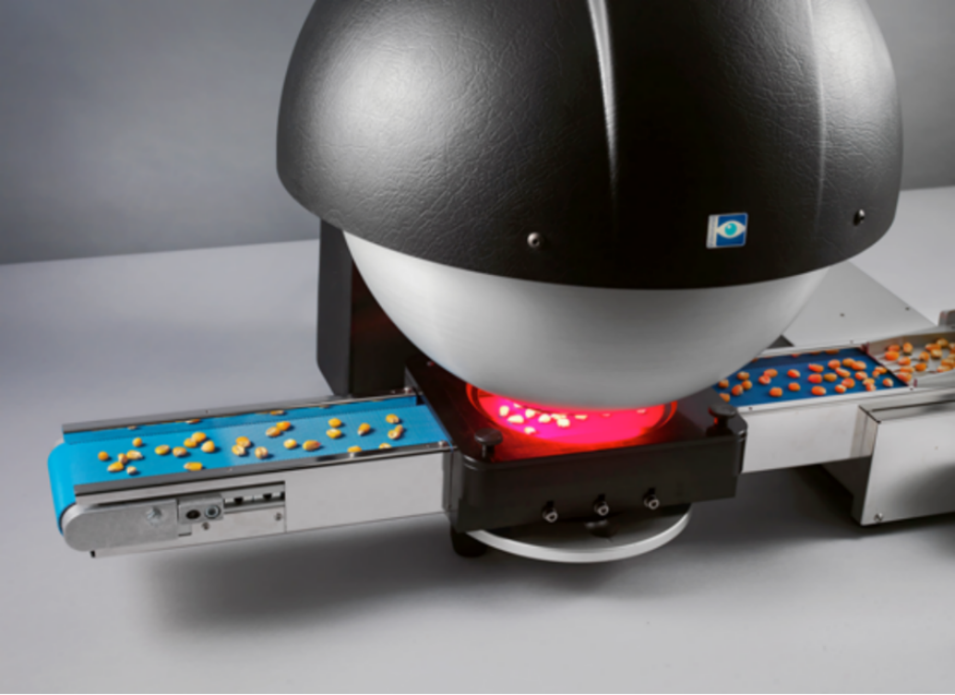品质至上,客户至上,您的满意就是我们的目标
当前位置: 首页 > 新闻动态
科学家利用Videometer多光谱成像系统发表苜蓿种子含水量研究文章
发表时间: 点击:261
来源:北京博普特科技有限公司
分享:
来自中国农业大学的科学家利用Videometer多光谱成像系统刚刚发表了题为“Rapid prediction and visualization of safe moisture content in alfalfa seeds based on multispectral imaging technology”的文章,文章发表于期刊Industrial Crops & Products。这是该团队利用Videometer多光谱成像系统发表的数十篇文章之一。
基于多光谱成像技术的紫花苜蓿种子安全含水率快速预测与可视化
摘要
水分会显著影响种子的销售、储存和加工。传统的水分检测方法通常速度慢、劳动强度大且无法满足现代农业的快速检测需求,特别是对于单个种子的无损检测。本研究应用多光谱成像获得 6 个水分水平 (4 %、 8 %、 12 %、 16 %、 25 % 和 41 %) 的苜蓿种子的形态和光谱数据。通过集成支持向量机 (SVM)、随机森林 (RF)、线性判别分析 (LDA)、反向传播神经网络 (BPNN) 和归一化典型判别分析 (nCDA) 等算法,开发了分类模型来区分安全和不安全的水分水平。结果表明,单独的光谱数据显著提高了模型的准确性和预测性。nCDA 可视化有效地说明了空间水分分布,突出了安全水分范围内(4 %、8 %、12 %)和不安全范围内(16 %、25 %、41 %)的种子之间的明显颜色差异。BPNN 表现出较高的模型精度,对安全和不安全水分含量的识别准确率达到 90.1%。通过排列方法确定的关键波长包括 970、880、570 和 490 nm。Pearson 相关分析显示发芽指标与光谱数据呈显著正相关,且随着种子贮藏时间的延长,这种相关性会增强。这些发现证实了多光谱成像在评估苜蓿种子安全水分含量方面的潜力,支持开发用于评估单个种子。这种进步能够快速去除高水分种子,防止储存过程中变质。


Rapid prediction and visualization of safe moisture content in alfalfa seeds based on multispectral imaging technology



Abstract
Moisture significantly impacts seed sales, storage, and processing. Traditional moisture testing methods are often slow, labor-intensive, and inadequate for the rapid detection demands of modern agriculture, particularly for non-destructive testing of individual seeds. This study applied multispectral imaging to obtain morphological and spectral data from alfalfa seeds at six moisture levels (4 %, 8 %, 12 %, 16 %, 25 %, and 41 %). By integrating algorithms such as Support Vector Machines (SVM), Random Forests (RF), Linear Discriminant Analysis (LDA), Back Propagation Neural Network (BPNN), and normalized typical discriminant analysis (nCDA) algorithms,
classification models were developed to distinguish between safe and unsafe moisture levels. The Results indicated that spectral data alone significantly improved model accuracy and prediction. nCDA visualizations effectively illustrated spatial moisture distribution, highlighting stark color differences between seeds in the safe moisture range (4 %, 8 %, 12 %) and those in the unsafe range (16 %, 25 %, 41 %). BPNN exhibited high model precision, achieving a recognition accuracy rate of 90.1 % for safe and unsafe moisture content. Key wavelengths identified by the Permutation method included 970, 880, 570, and 490 nm. Pearson correlation analysis showed a significant positive correlation between germination indicators and spectral data, which strengthened with longer seed storage. These findings confirm the potential of multispectral imaging for assessing the safe moisture content of alfalfa seeds, supporting the development of detection systems for evaluating moisture content in
individual seeds. This advancement enables the rapid removal of high-moisture seeds, preventing deterioration during storage.